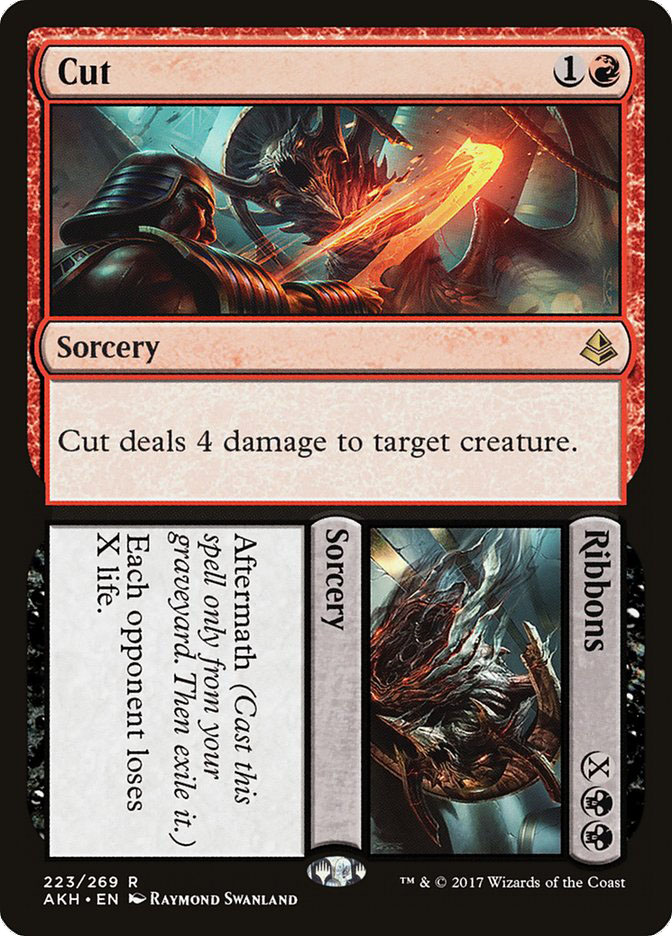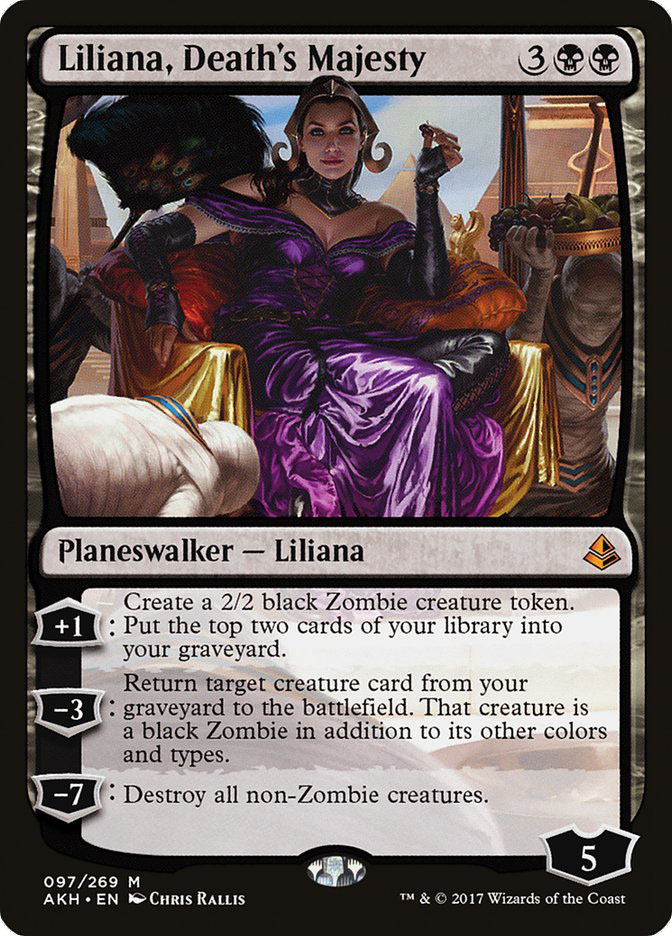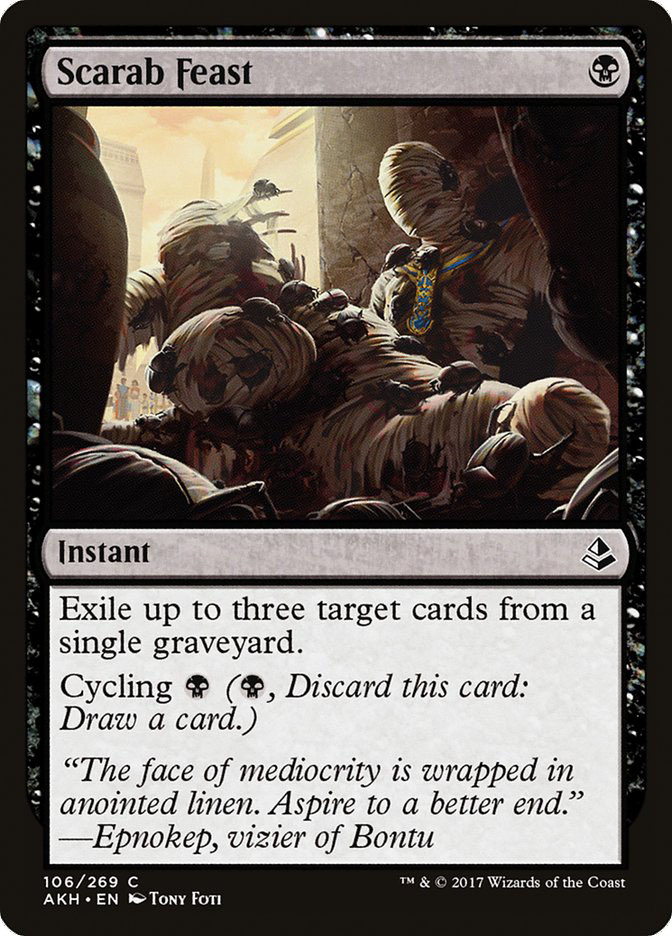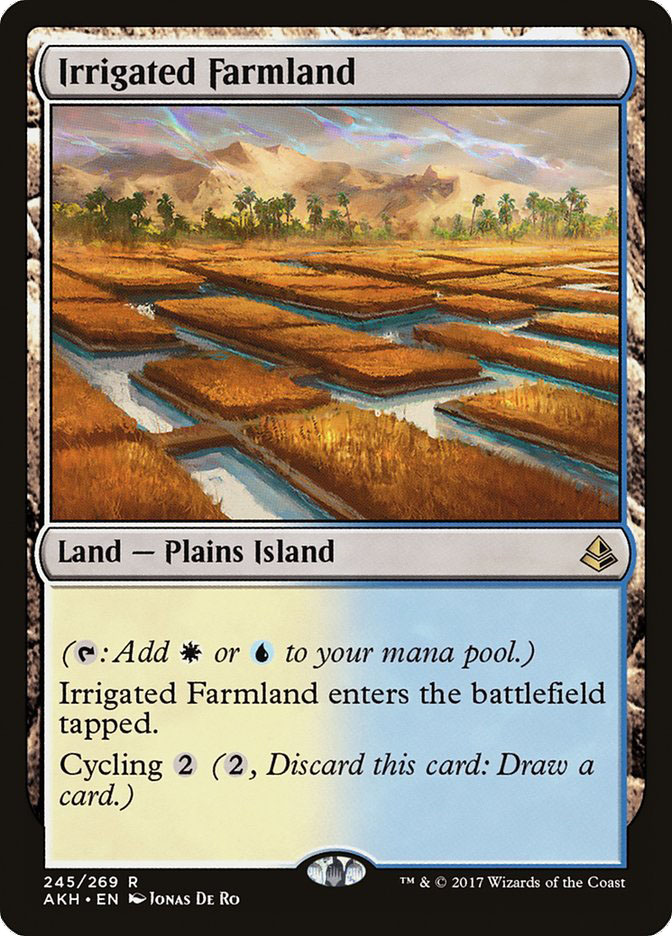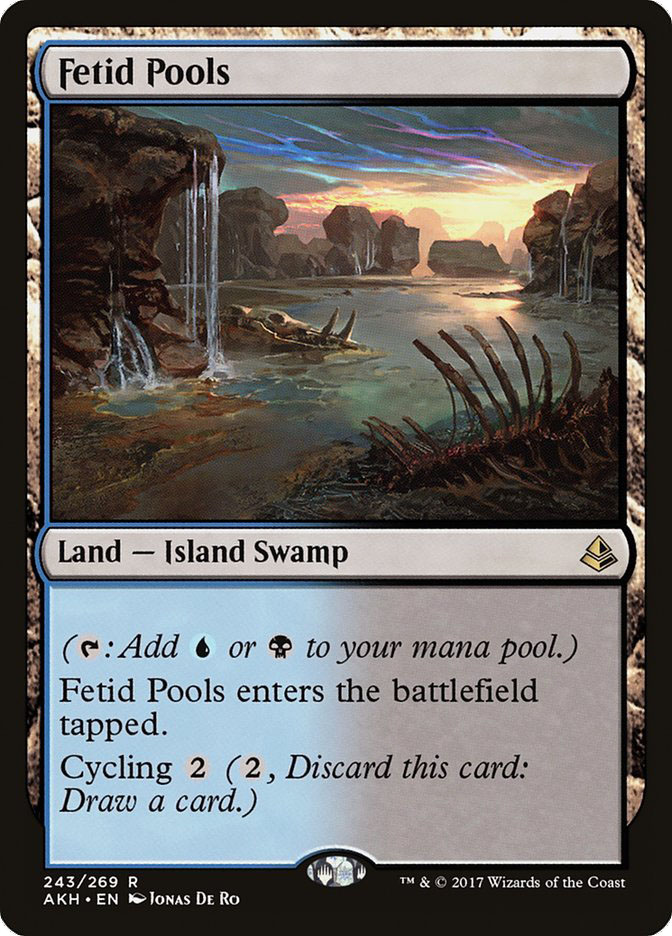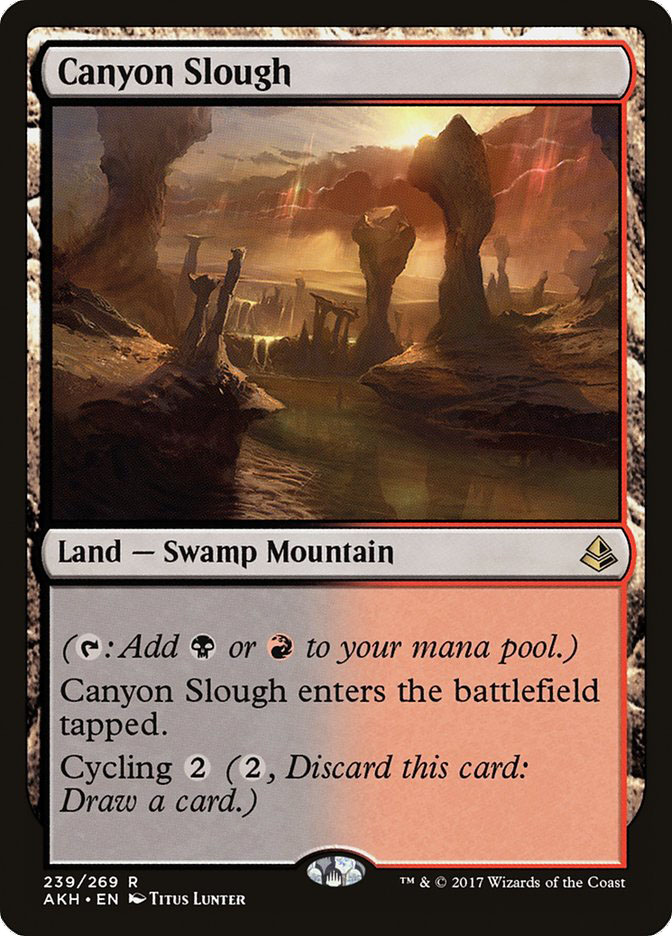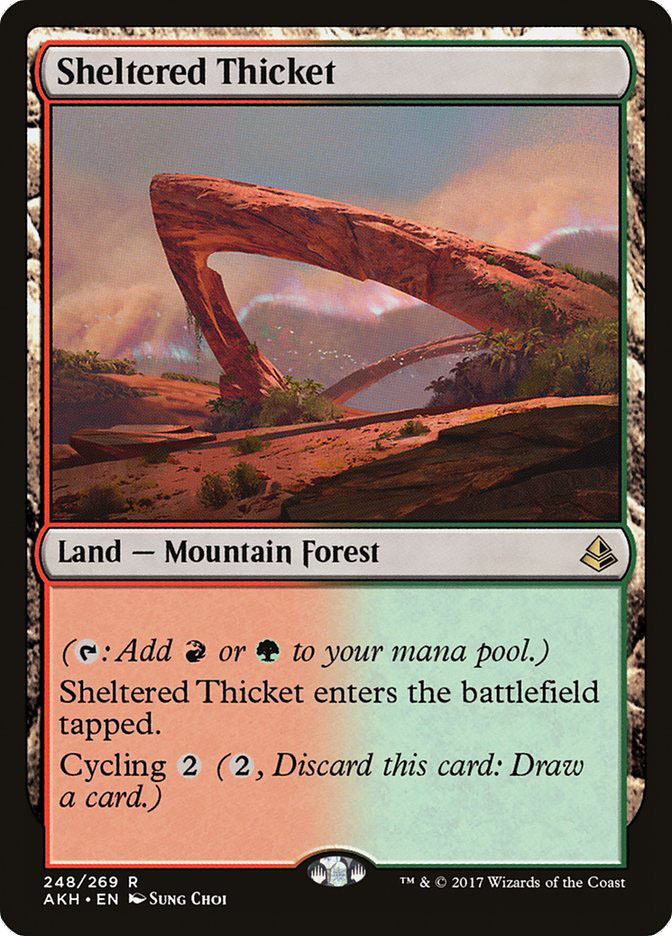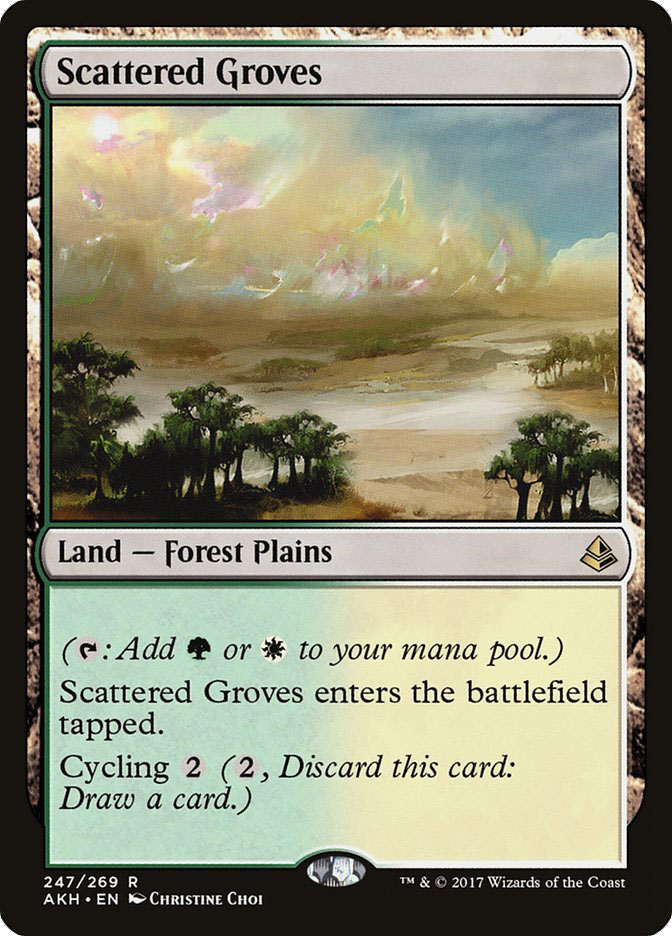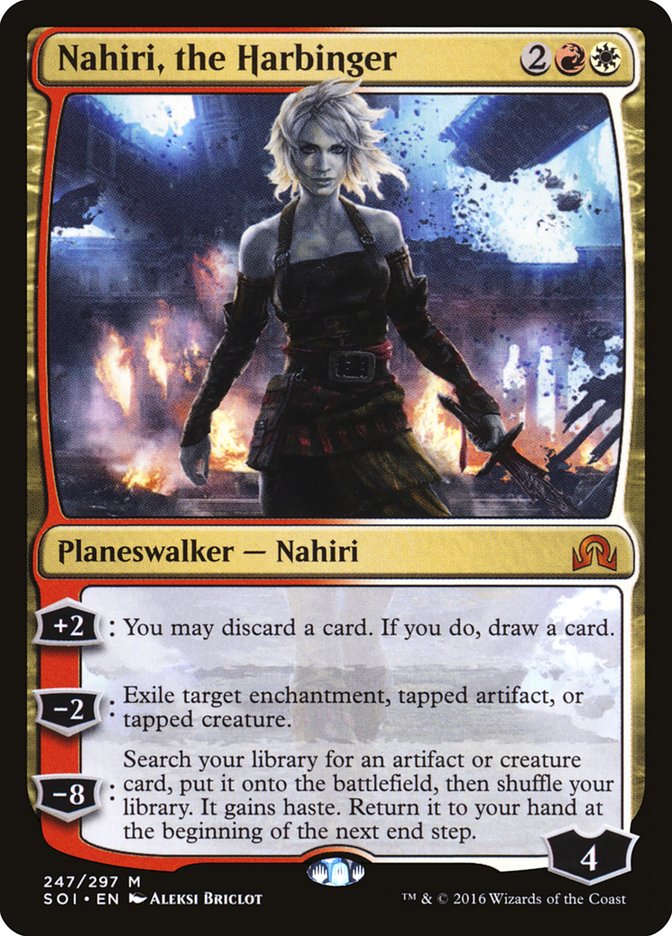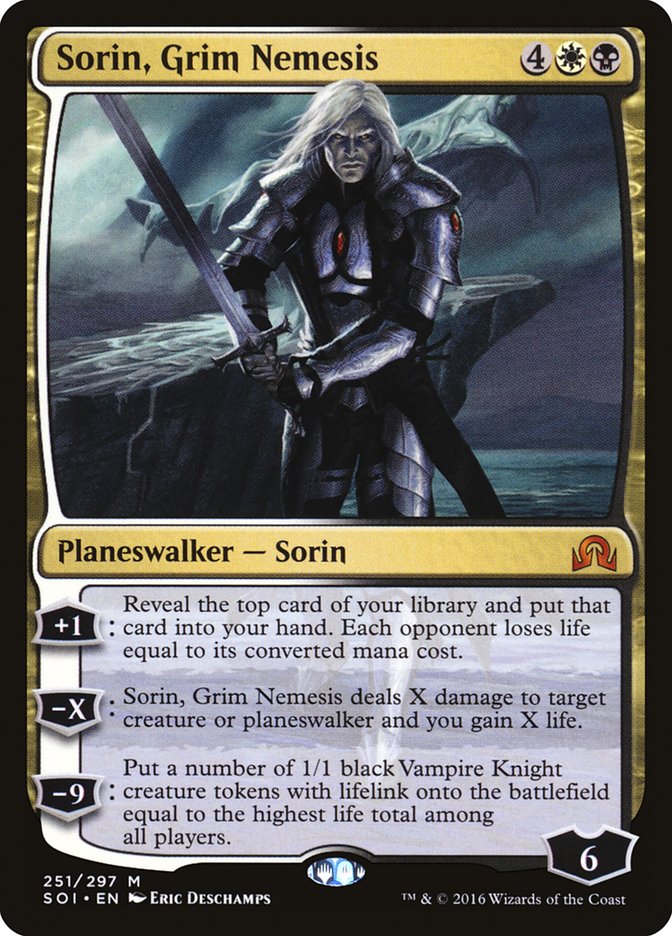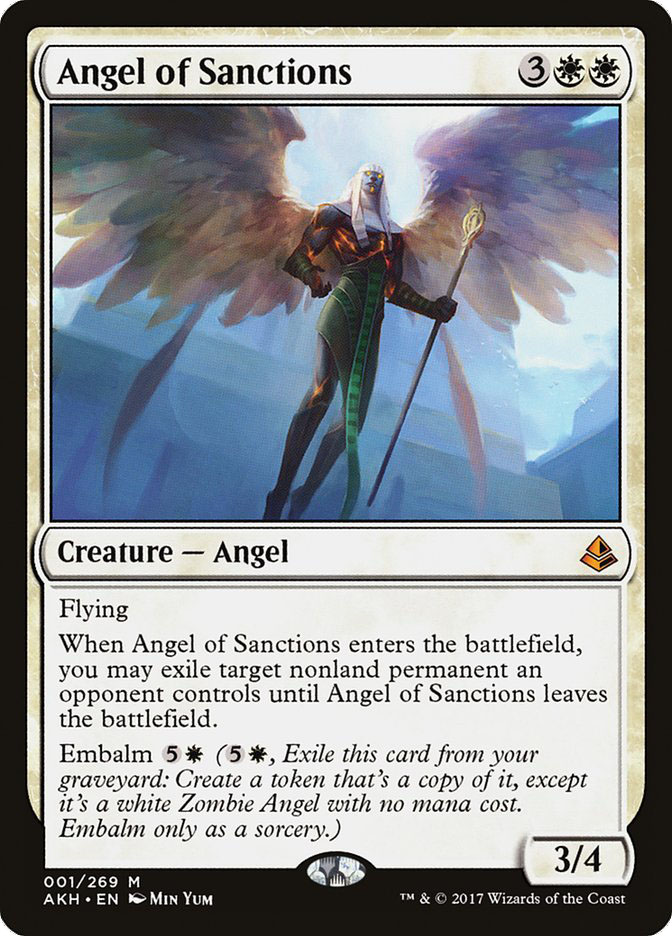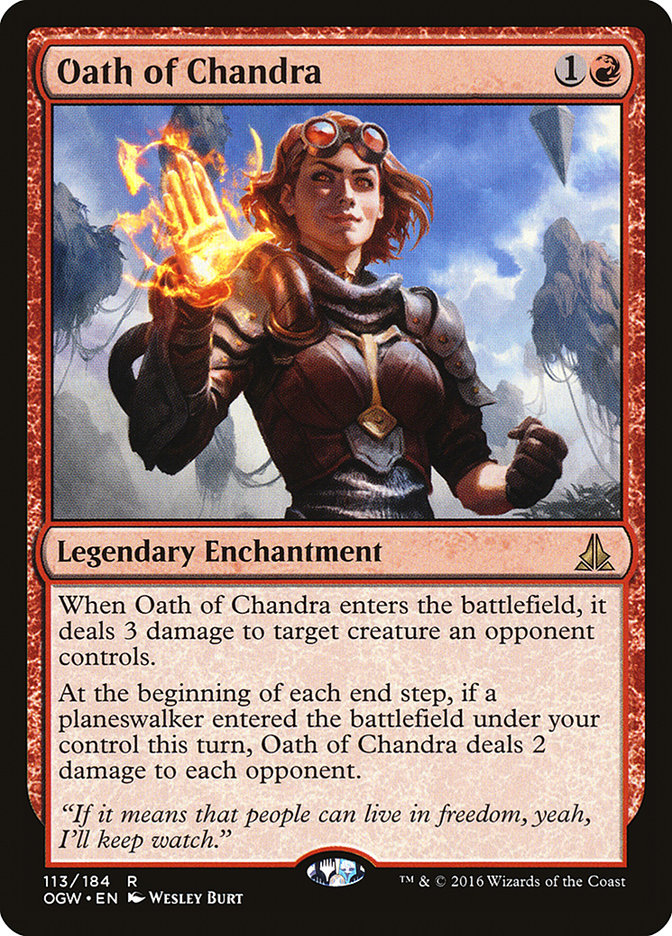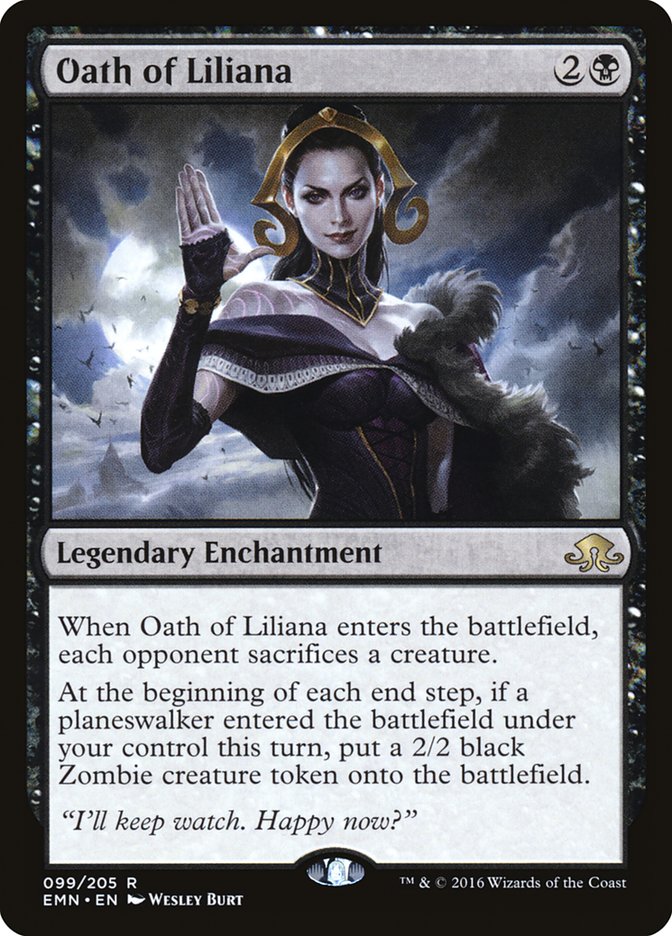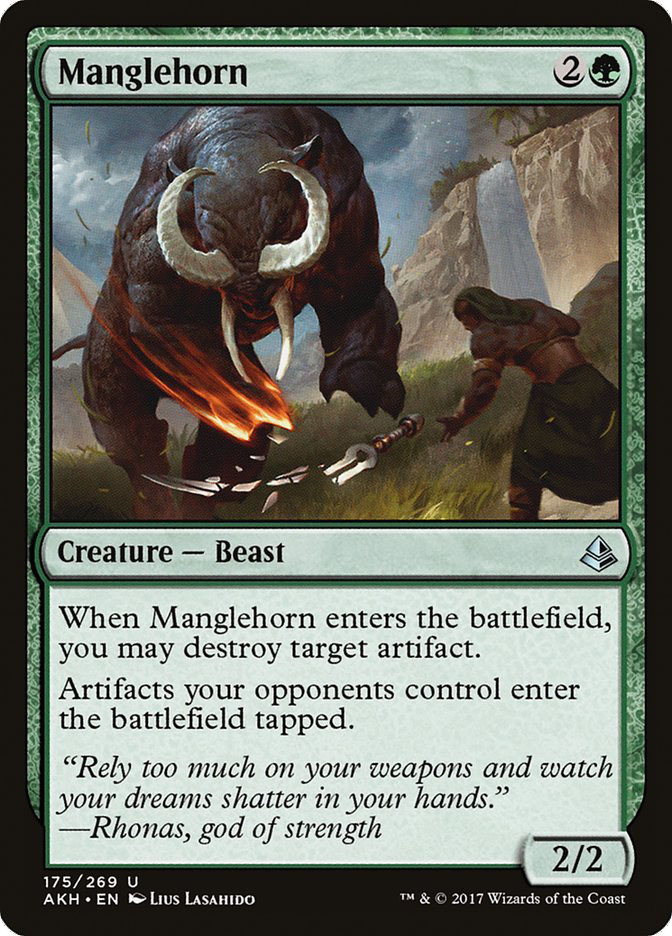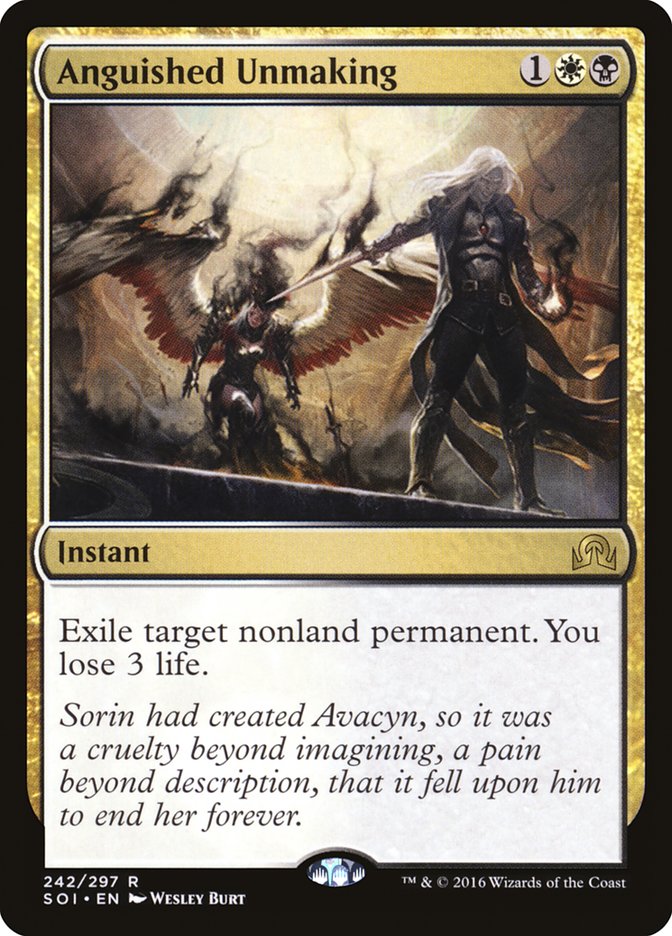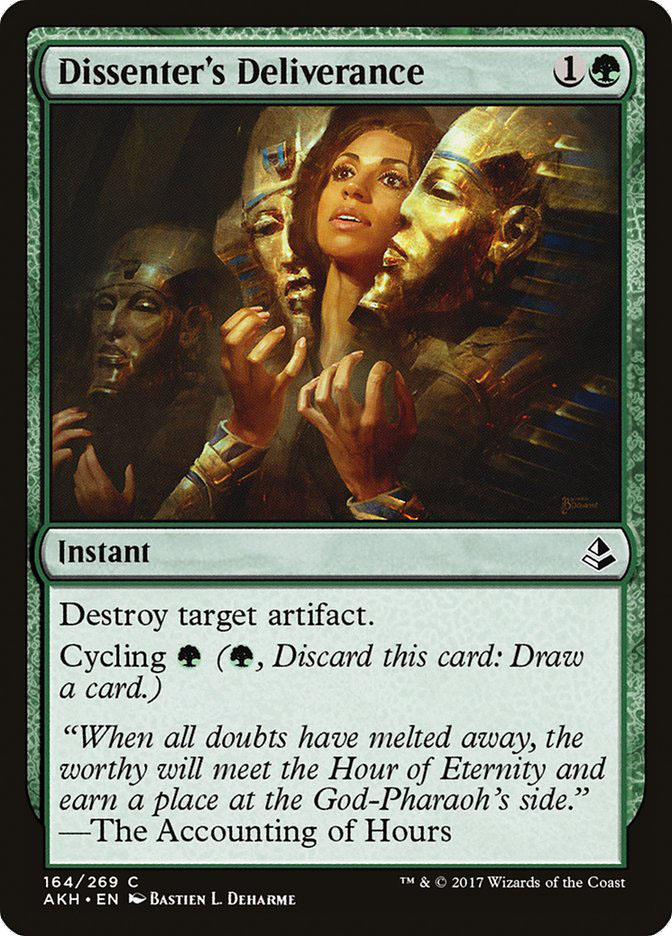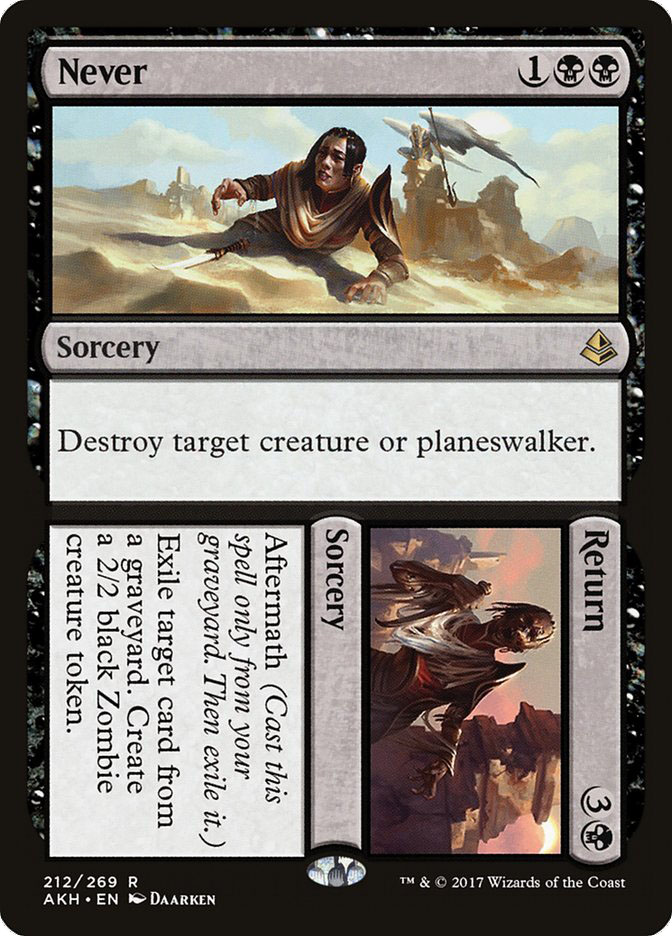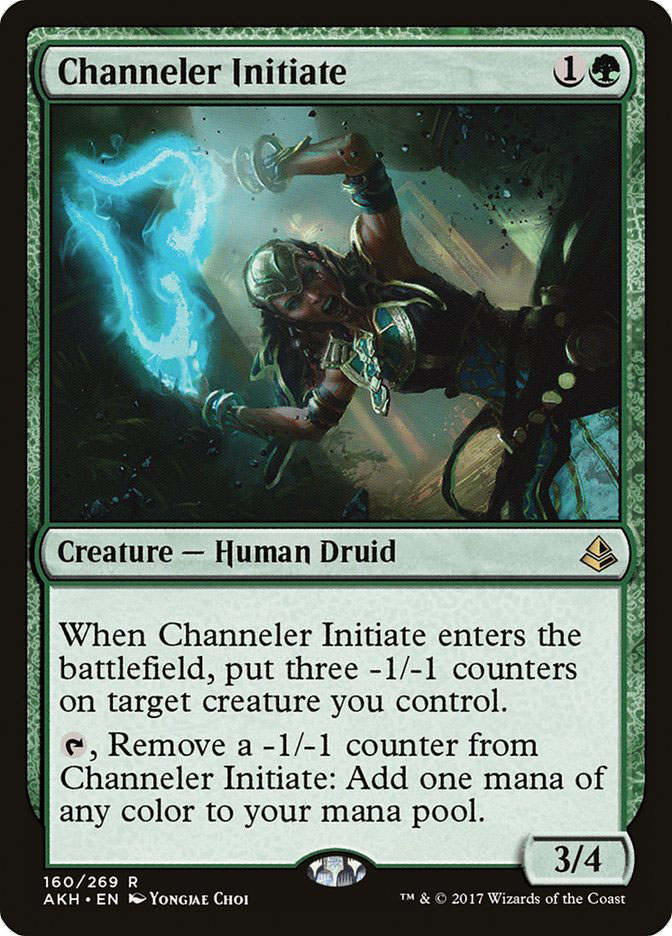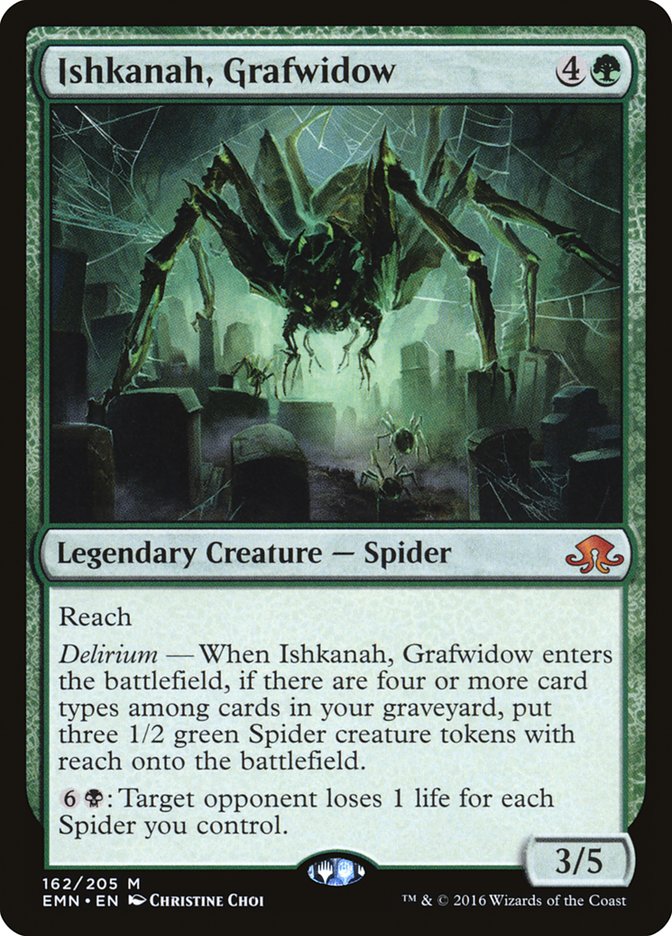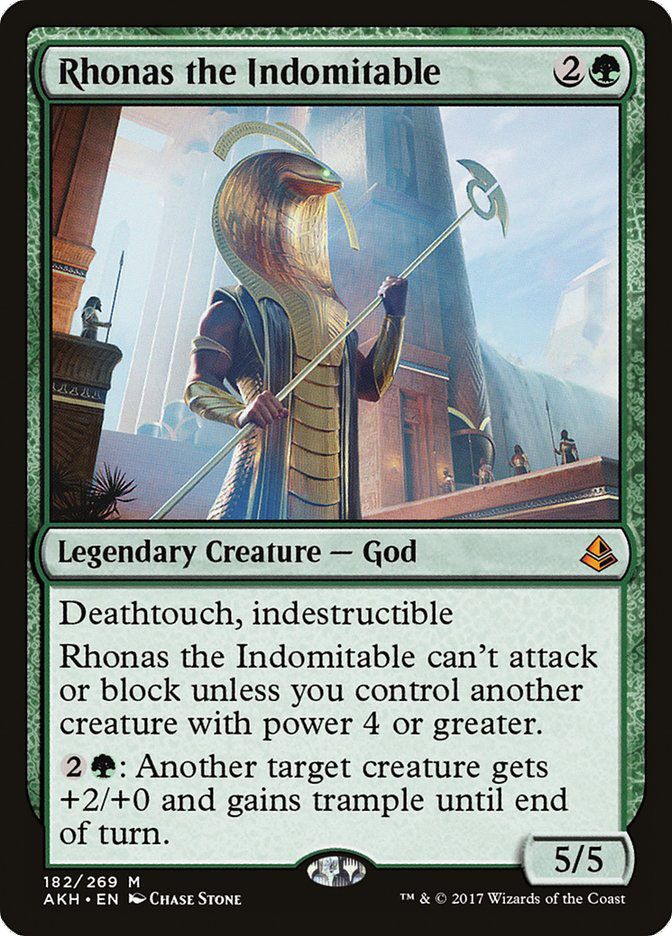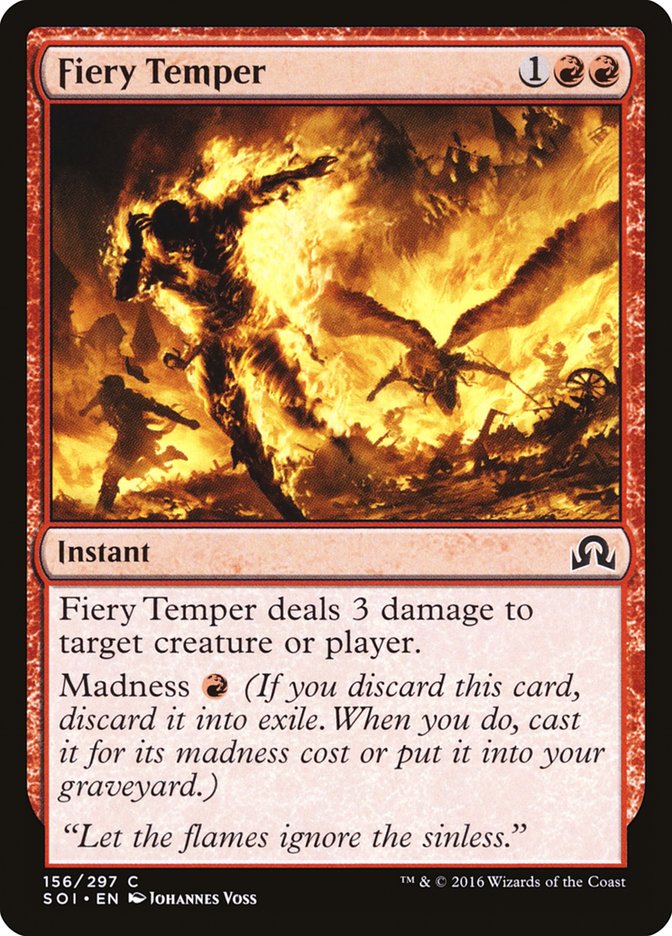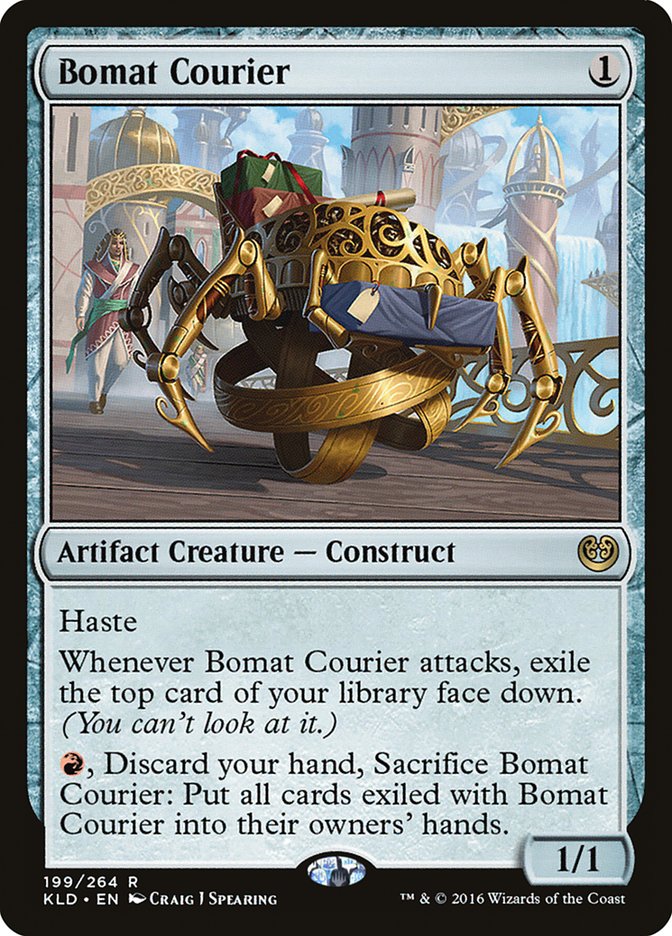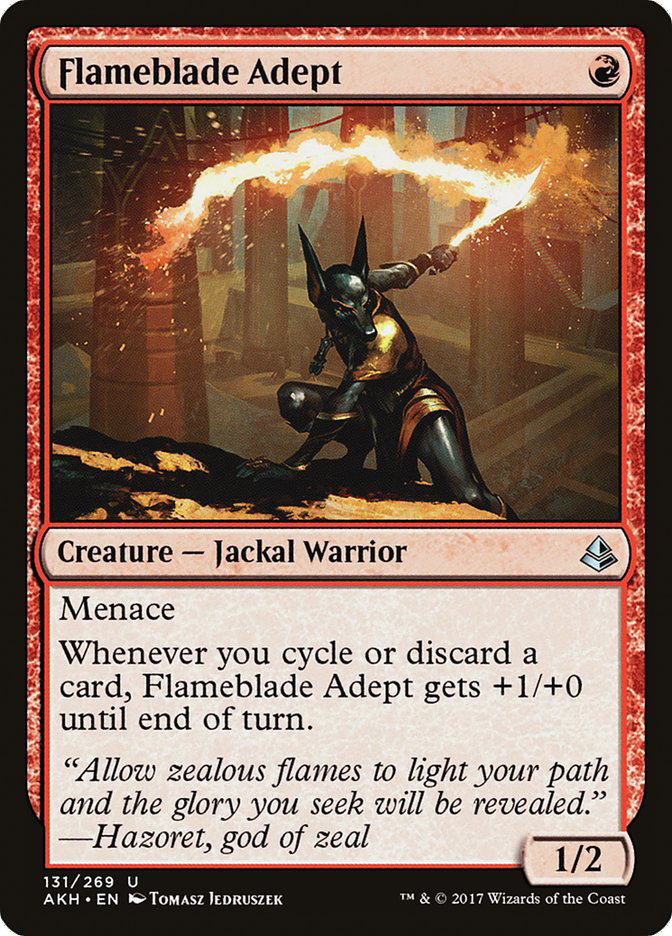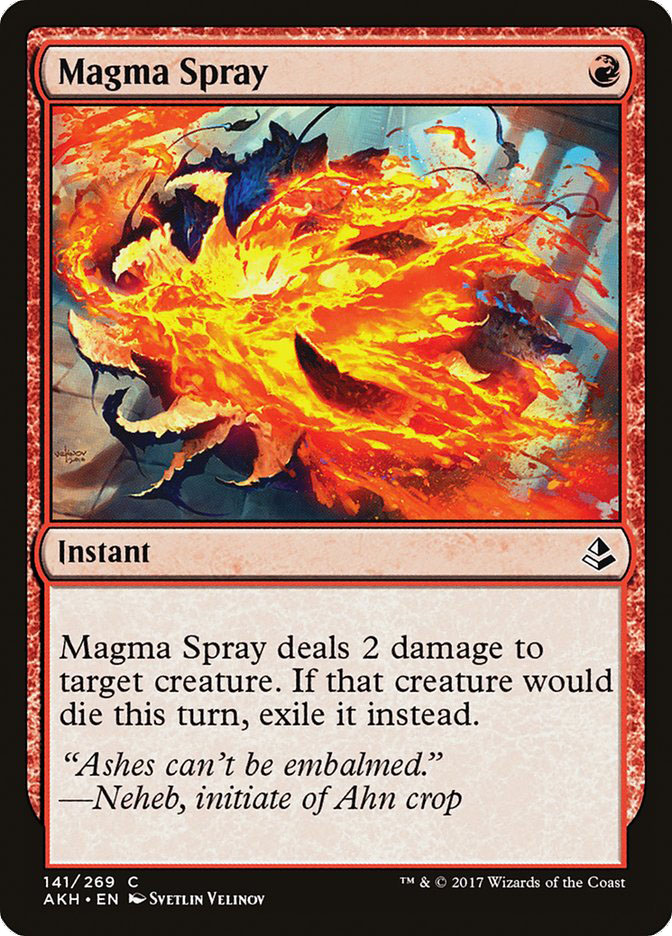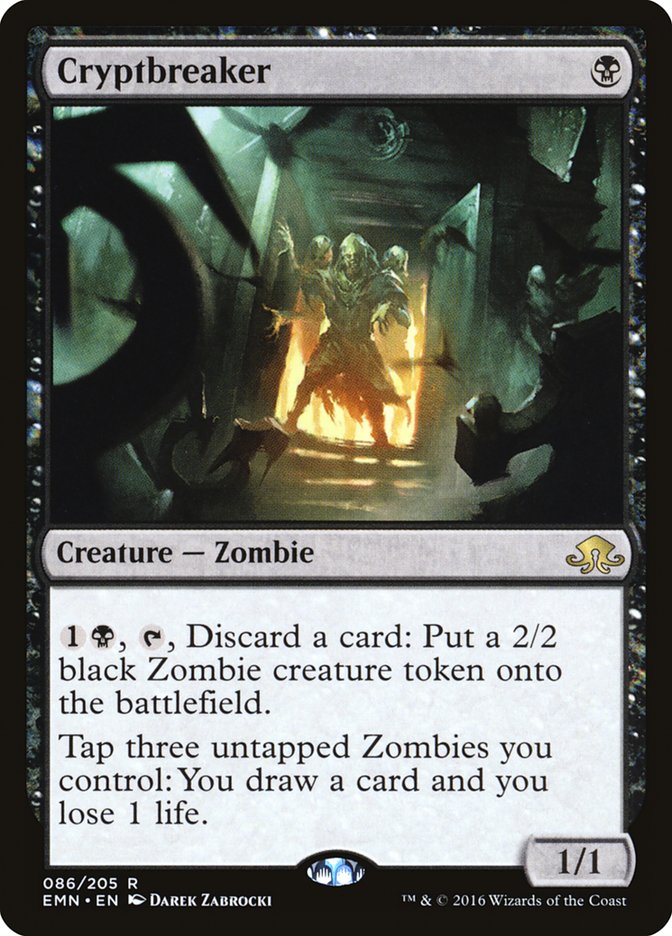I’ve seen what Amonkhet has to offer, I’ve seen what people have been working on, and now I think it’s time to actually see what the best decks are.
Let’s start with the obvious.
Creatures (17)
- 4 Thraben Inspector
- 2 Thalia, Heretic Cathar
- 4 Scrapheap Scrounger
- 4 Toolcraft Exemplar
- 3 Walking Ballista
Planeswalkers (6)
Lands (24)
Spells (13)

New cards that potentially improve this archetype:
Thankfully, Mardu doesn’t gain much. If anything, it should become weaker as other decks get better and also gain potent cards against it such as Drake Haven, Cast Out, Glorybringer, Manglehorn, and By Force. I fully expect Hazoret the Fervent and Rhonas the Indomitable to vastly improve other archetypes, which hopefully puts them on power level with Mardu.
Cut//Ribbons and Cast Out are nice options for Mardu’s removal suite, but other decks having access to those cards is far worse for Mardu than being able to play them itself. Mardu used to be the only deck capable of playing the best cards in the format which were difficult to deal with. However, with Cast Out available to a host of other decks, Mardu no longer has the stranglehold on the format it once had.
Gideon, Ally of Zendikar used to be close to indestructible, but now that’s no longer the case. Gideon on the play is still as terrifying as it was before, but with other decks becoming faster, it will likely be under more pressure than ever before.
The cycling duals likely improve Mardu to some degree, as they provide better flood insurance than creature-lands. Then again, everyone else gets that upgrade too. But let’s face it: if you’re activating a creature-land in Mardu, you’re probably losing the game.
The cycling lands themselves aren’t without issues, though. If you have four mana and draw a semi-useless cycling land, ideally you would be able to cycle it into something you can also cast that turn. In Mardu, that chance is relatively high, but it’s still possible to draw a couple of four-drops in a row and have that cycle not get you very far.
There’s also the issue of the deck with eight white one-drops having a black and red land, which it would ideally play on turn 1. If you have a one-drop, it probably means you’re interested in casting something on turn 2 as well, which would either be an artifact to pump your Toolcraft Exemplar or even just using your mana to sacrifice your Clue token.
I’m happy to have them and certainly don’t want to seem ungrateful, but they aren’t perfect.
The sideboard plan of Nahiri, the Harbinger and Sorin, Grim Nemesis is how to dominate the mirror match.
With Cast Out presumably being popular, Nahiri, the Harbinger seems like a fantastic pre-emptive measure. There will also be Drake Havens and whatnot, so you shouldn’t have trouble finding any targets. If you do, start cycling away your weak cards.
Nahiri, the Harbinger isn’t as proactive as Mardu would generally like, but if the world is better at interacting with Mardu, Nahiri is where you want to be. There’s also the benefit of having what is effectively a sideboard card in your maindeck, which opens up slots in the sideboard for other things.
Glorybringer has the potential to re-break the mirror by providing a hasty threat to pressure planeswalkers. Obviously it doesn’t line up well against Archangel Avacyn, but hopefully you can sniff that out in time. You could always sideboard more copies of Cast Out and Anguished Unmaking to fight planeswalkers, but I prefer the proactive approach.
Angel of Sanctions has a ton of potential, but I can’t help feeling like it’s going to be a major tempo loss every time you cast it. You could say the same for Archangel Avacyn when she’s at her worst, though, so who knows.
I like Cut//Ribbons over Oath of Chandra or Oath of Liliana because of the marginal value you get when you discard it, and because four damage will basically accomplish the same thing as either Oath would. When you’re able to cycle your excess land, Ribbons won’t be as effective as you’d probably like, so maybe it is better to go with Oath of Chandra, but for now I’d like to try the new card.
If you’re scared of Aetherworks Marvel, you need to play something in your sideboard. Transgress the Mind and Ceremonious Rejection seem like your best options if you’re not playing Manglehorn. How popular Aetherworks Marvel will be remains to be seen, but having something like Transgress the Mind is a fine hedge anyway.
Forsake the Worldly is interesting, especially in the same set as Cast Out. In order to want to play Forsake the Worldly, it probably makes sense for you to max out on Cast Out first. However, in a world of Rhonas the Indomitable, Heart of Kiran, and the like, being a single mana cheaper can make all the difference. Anguished Unmaking can fill that void, but you can’t play too many of them because of the life loss.
Even if Mardu doesn’t end up being the best deck, it still has its place as the litmus test of the format. Next up is the other litmus test.
Creatures (18)
Planeswalkers (7)
Lands (21)
Spells (14)

New cards that potentially improve this archetype:
As you can see, nothing has changed from the 75. People are talking about potentially playing cycling lands, but I’m not seeing it. Four-Color Saheeli wants to tap out every turn, and while it does have issues with flooding, I’d rather flood than have a land enter the battlefield tapped in the early turns. I’m passing for now, but as always, if you’re looking to sideboard in a land when you bring in some expensive cards from your sideboard, the cycling lands are a good choice.
There is probably a version of the deck that utilizes Nissa, Steward of Elements to her full potential, but I can’t see it yet. It probably involves cutting the energy package and playing things like Gnarlwood Dryad, but that’s as far as I’ve gotten.
Four-Color Saheeli will continue to be a threat. I do look forward to the day when casting Rogue Refiner isn’t something you can realistically do, though. At that point, it’ll probably be time to drop the energy theme and retool the deck entirely.
The last thing I need to focus on, aside from trying to find a build with Nissa, is retooling the sideboard. I haven’t explored new configurations very much, but the one I had toward the end of last season is probably good enough for right now.
Creatures (13)
- 2 Tireless Tracker
- 2 Ishkanah, Grafwidow
- 1 Noxious Gearhulk
- 3 Walking Ballista
- 4 Channeler Initiate
- 1 Manglehorn
Planeswalkers (4)
Lands (24)
Spells (19)

New cards that potentially improve this archetype:
Here we have a classic delirium strategy from Michael Majors. While it fell out of favor after mostly getting mauled by Mardu and Saheeli, it started to make a comeback toward the end of the season when people realized that To the Slaughter was possibly the best-positioned card in the entire format against both of the best decks. None of that has really changed, and this is basically the only deck that can play it effectively.
With Liliana, Death’s Majesty, the deck should see a sharp resurgence. From one card, you can now create a winning battlefield position, similar to what Ishkanah, Grafwidow used to do on its own. She plays so well with the rest of the deck that it couldn’t have been on accident.
I like most of what Majors is doing here, but I also disagree with some stuff. For example, I think we’ve learned from years of building these B/G decks that lean on the controlling side that mana creatures aren’t really where you want to be. Channeler Initiate is a cut above the rest of them, but it’s still not quite good enough.
In the early-game, you often don’t have the luxury of using your mana to accomplish very little. At least if you’re popping a Vessel of Nascency, you’re working toward your gameplan of casting Ishkanah, Grafwidow or Liliana, Death’s Majesty on turn 5. The early-game is typically spent on removing their threats or setting up your powerful plays, not paying two mana to get an additional mana on subsequent turns. The fact that Channeler Initiate eventually becomes a real threat isn’t entirely moot, but it’s close.
Only two Fatal Push is the only other grievance I have. It seems like this deck is going to be great heading into the late-game, so I’d prefer to have as many cheap answers as I could. Grasp of Darkness removes more threats, but not by much.
B/G Delirium is excellent, but aggro might be where it’s at.
Creatures (27)
- 4 Sylvan Advocate
- 4 Verdurous Gearhulk
- 3 Scrapheap Scrounger
- 4 Winding Constrictor
- 3 Rishkar, Peema Renegade
- 4 Walking Ballista
- 3 Manglehorn
- 2 Rhonas the Indomitable
Lands (24)
Spells (9)

New cards that potentially improve this archetype:
This might not be the best version of this deck, but it looks good to me. Only two Rhonas the Indomitable is likely a mistake, but I don’t think you can play the full amount. If your deck is playing four copies of your best legendary card, it’s usually not a complete disaster. However, once you start playing multiple copies of each of your legendaries, you run into issues. Maybe Rhonas is so powerful that you should play four, regardless of the fact that you’re also playing multiples of Rishkar, Peema Renegade.
From working on this deck, the one thing I realized is that I really like the green cards, but effectively splashing Grasp of Darkness isn’t something I’m excited about. I’ll be looking for a different splash color, even if that “color” is actually colorless!
Creatures (23)
- 3 Pia Nalaar
- 2 Bomat Courier
- 4 Scrapheap Scrounger
- 4 Inventor's Apprentice
- 3 Walking Ballista
- 3 Hazoret the Fervent
- 4 Flameblade Adept
Lands (22)
Spells (15)

Most of my experience with building red decks has been trying to do too much at once. I wanted to combine the madness and artifact synergies, since there is some decent overlap, but it doesn’t work. Instead, I’ll present two decks, both of which have been streamlined a bit.
The biggest thing I struggled with while building the above deck was the artifact count. Walking Ballista and Bomat Courier aren’t cards that I’m terribly excited to sleeve up in R/B, and that could potentially be the downfall of the archetype. I miss Bloodrage Brawler in particular. Without it, Fiery Temper appears somewhat lackluster. In that sense, this version is still a work in progress, but it’s far better than my previous versions.
Where are the Fatal Pushes? In short, I think Cut//Ribbons is much better for the archetype. There are some issues with not having black mana early on, but those could be mitigated if we cared. Cut is going to kill most things, albeit for double the cost. The Lava Axe effect on the backside is very relevant, though.
We could obviously move away from the artifact theme, but powering up Unlicensed Disintegration is necessary. That could still happen with twelve artifacts or so, but I’d rather not take the risk. Plus, Inventor’s Apprentice is great, whereas I’m losing faith in Soul-Scar Mage.
Think about the decks where Monastery Swiftspear has seen play. Those decks have way higher spell counts than the decks I’ve been building, and I don’t think it’s possible to achieve a higher spell density without becoming a weirdo Cathartic Reunion deck. I’d rather play Bomat Courier.
Either way, Flameblade Adept is incredible, and that’s partly the reason why I’m so excited for the next version.
Creatures (28)
- 4 Prized Amalgam
- 4 Insolent Neonate
- 4 Haunted Dead
- 4 Scrapheap Scrounger
- 3 Hazoret the Fervent
- 4 Flameblade Adept
- 1 Dread Wanderer
- 4 Bloodrage Brawler
Lands (22)
Spells (10)
Sideboard

This deck is all-in on the madness plan. Bloodrage Brawler and Insolent Neonate lead to discarding Haunted Dead and Prized Amalgam, which in turn fuels Hazoret the Fervent. Without Cathartic Reunion, you probably won’t draw too many Haunted Deads or Prized Amalgams on average, but I think that’s all right. Even if you’re just discarding excess lands or trying to get Hazoret active, Haunted Dead is worth it.
Magma Spray is kind of an issue, but it’s only going to be played over Shock in certain decks, and this deck has so many good targets for Magma Spray that it’s kind of irrelevant.
Cryptbreaker and Plague Belcher are very appealing cards, but the red one-drops skew the manabase toward Mountains. We could probably take the deck in an alternate direction, but the red cards seem much better. Dread Wanderer is a cute way to trigger Prized Amalgam, but you can’t afford to play too many.
Since this deck is less aggressive, I like Trespasser’s Curse in the sideboard for the Saheeli combo. You’re probably going to give them more time to set up and find a way to beat your wall of removal, so having a permanent-based answer to the combo is nice. Also, it’s not like the card is bad on its own, especially considering how reliant they are on Whirler Virtuoso to stop aggression.
Also, because this deck is less capable of grinding, By Force seems much better than Release the Gremlins. This deck has no shortage of sticky threats, but it also has less relevant interaction for their powerful cards.
The sideboard is kind of a mess, but this version gets to play some cute cards like Bloodhall Priest and Nahiri’s Wrath. Bloodhall Priest is a maindeckable card, but I think moving away from it is the correct move. It’s clunky and requires a lot of setup. Most of the Game 1s probably won’t be very grindy anyway.
Creatures (6)
Lands (26)
Spells (28)

As you may have noticed, I am full on Drake Haven now. Nearly half the cards in the deck cycle, which means it’s going to be incredibly rare for Drake Haven to not be online whenever you want it to be.
On top of that, each of the cycling cards is perfectly reasonable to play on its own. If that weren’t the case, I might be willing to just sideboard them, but as is, Drake Haven seems like the perfect maindeck route for U/W Control.
Past that, the counterspell suite is super-interesting. Censor alleviates some of the early-game concerns, so maybe you want more Disallows?
Creatures (20)
Lands (24)
Spells (16)
Sideboard

New cards that potentially improve this archetype:
U/R Emerge doesn’t get much from Amonkhet, but what it does get drastically changes the way it operates as a whole. Rather than be a weird control deck that has to maindeck Fevered Visions, instead it gets to morph into a beatdown machine capable of spitting out a horde of creatures every turn.
The only thing I’m worried about right now is the potential for Scarab Feast, but Drake Haven, Elder Deep-Fiend, and Bloodrage Brawler can probably beat them down despite getting your graveyard attacked. U/R Emerge may have been a thing last season, but I assure you this new version is quite different. This version is looking to end games very quickly.
***
These are the decks I firmly believe to be the best. While Amonkhet gave Standard plenty of playable cards, none of them appear to build an archetype on their own. The possibilities exist, but it’s difficult to be better than Mardu or Saheeli, so most of the great cards from the set end up in decks that already exist.
It might be a little boring to see the “same” decks, but the new cards have the potentially to drastically alter the dynamic of the format. If I were going to #SCGATL, I’d be more than happy to register any of these decks. Instead, I’ll probably go ahead and register them in some Magic Online Leagues!



